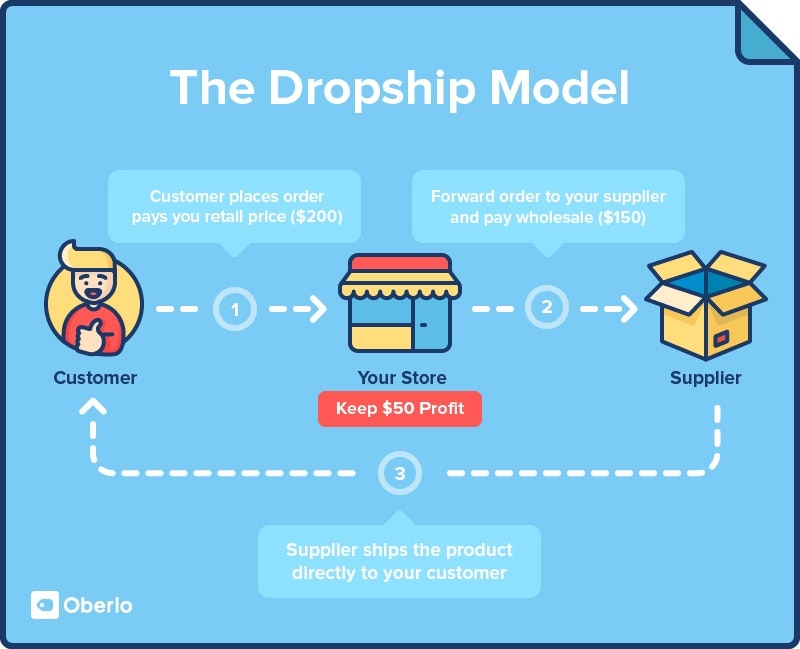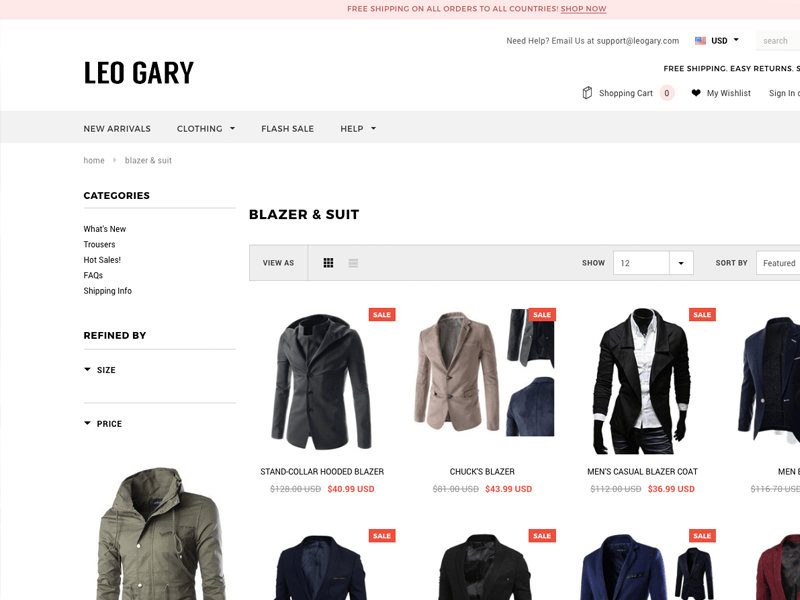Allen, a 24-year-old student from Hangzhou, China never dreamed his side-hustle would turn into a viable business. Imagine his surprise when, after playing around with Shopify and dropshipping, step-by-step he led himself from getting to know how ecommerce works into hitting $800,000 in sales in the last year. Being an easy-going guy, he agreed to share the lessons he learned along the way with our readers.
Why Dropshipping?
“There’s a paradigm that one should take business very seriously, but actually otherwise is true.” says Allen. He was always in favor of just doing things for fun to see where they might go.
Before launching Leo Gary, Allen had already played with a few stores, as he says, just for fun, but he never made any significant sales with those attempts. “It was interesting for me to see how ecommerce works and put my free evenings to good use.” Because he was funding his startup from his personal savings, he was looking for ways to cut costs at each and every step, which is why he got into dropshipping with Shopify.

With dropshipping, ecommerce store owners don’t need to stock inventory or buy products in advance and can efficiently launch and test a business with a very small budget. When you receive an order, you just buy it from a supplier and have it shipped directly to your customer.
Allen says dropshipping is not a perfect ecommerce model, which is why it’s no surprise Zappos turned away from it after it grew into a solid startup. But he does claim it’s the perfect model for beginners and is the easiest way to launch your ecommerce business.
Key take-away: Put your free time into learning and experimenting with low-cost ecommerce models. Chances are you’ll succeed, but even if you don’t, you’ll still learn a lot valuable lessons for your next venture.
Why Men’s Clothing?
Allen quickly learned a hard lesson: After launching a store, people don’t just automatically come to it. It’s not like you’re going to get “walk-ins” the way you might when people pass by a physical store.
“Launching an ecommerce business with Shopify and similar tools was the easy part. The hard part is sales,” says Allen.
He goes on to say that he doesn’t believe in extreme niche targeting because now it’s such a popular go-to option for new ecommerce merchants. He decided instead to pick a broad men’s clothing category and use specific niche products to attract visitors through his advertising campaigns.

Allen’s store LeoGary.com offers a broad men’s clothing.
Allen’s store LeoGary.com offers a broad range of men’s clothing. Allen explains it this way: “Dropshipping allows me to have a lot of products, and this allows me to be flexible. If my niche product doesn’t attract any visitors, I just pick another product for my store.” However, if he were to launch a bicycle gear store named bycyclefansgear.com, he’d probably never be able to a go of it selling only sports clothing. “I think every dropshipping store owner should offer a lot of different products, but use the niche products to attract visitors to the site.”
Key take-away: Be sure to conduct tests and don’t constrain yourself with an extreme niche. Instead, have a general store, but use carefully selected niche products for your advertising campaigns as a lead magnet for a highly targeted audience.
Why Facebook Ads?
Google Ads and Search Engine Marketing (SEM/SEO) are great ways to capture people who are already interested in your products. However, you have to create that interest first or you’ll end up fighting the big names and will eventually lose.
Shopify dropship apps allowed Allen to scale his business globally, and he complemented this with an equally global and flexible marketing channel: Facebook.
Facebook has a vast amount of data about its users. If you know how to make the most of it, you can achieve amazing results. Allen goes on to share his top method of using Lookalike Audiences.
“Most of my sales came from Facebook Custom Audiences and Lookalike Audiences.” When creating a Lookalike Audience, you give Facebook a base audience and ask it to find the most similar people to those on that list. For example, you can take a list of your own website visitors and ask Facebook to create a list of people who are most similar to those visitors.

A screenshot from LeoGary.com Google Analytics account representing revenues from Traffic brought by Facebook.
This is not a secret tip, and a lot people are already using this method. Facebook’s advanced data capabilities for knowing who your website visitors are and how they differ from the average Facebook user vastly outstrips anything you can do with your own analytics. Keep in mind that the more visitors you have, the more accurate Facebook is at finding other people similar to your visitors. Combined with Facebook retargeting campaigns, these techniques alone generated Allan almost $600,000 in sales.
Key take-away: Learn Facebook Ads. Start small and increase your budgets step-by-step. Facebook says it will have 3 billion users in 2030, and you will be able to reach every one of them.
Any Other Secret Tips?
Everyone says the US is the go-to market for dropshipping store owners. “The problem is in that sentence,” adds Allen. The more people do something in terms of marketing, the less effective that particular marketing method becomes. Living outside the US, it was easier for Allen to resist targeting US residents, and he argues that everyone should look to try other markets as well.
This is especially true when you’re a beginner. You don’t have the budget or experience to serve the very demanding US market, and the advertising costs to reach that market are prohibitive.
Want to Learn More?
- How They Turned $5,000 Into a Thriving Home Decor Business
- From Zero to $1M in 8 Months: The Story of a First-Time ecommerce Entrepreneur
- The One-Product Business: This Entrepreneur’s Simple Formula for Success
- 10 Online Stores to Use as Inspiration for Your First Store
Is there anything else you’d like to know more about and wish was included in this article? Let us know in the comments below!
